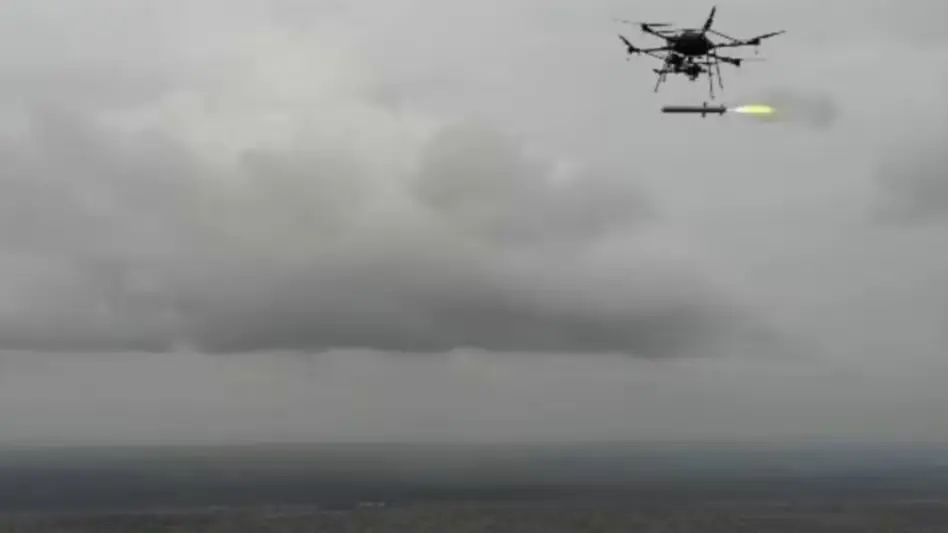
India boosts its military edge with the successful test of the ULPGM-V3 missile from a drone
ULPGM-V3 Missile – In a landmark achievement that underscores India’s growing prowess in indigenous defence technology, the Defence Research and Development Organisation (DRDO) has successfully test-fired the ULPGM-V3, a precision-guided missile launched from an unmanned aerial vehicle (UAV). Conducted at the National Open Area Range (NOAR) in Kurnool, Andhra Pradesh, this test marks a major leap forward in India’s ability to conduct high-precision strikes with minimal risk to personnel.
This blog dives deep into the significance of the ULPGM-V3, its technological innovations, strategic implications, and what it means for India’s future on the global defence stage.
The ULPGM-V3 Missile: What Is It?
The UAV-Launched Precision Guided Missile (ULPGM-V3) is the third-generation iteration of a missile system designed for deployment from drones. It builds upon the earlier ULPGM-V2, offering enhanced range, accuracy, and modularity.
Key Features:
- High-definition dual-channel seeker for day-and-night targeting
- Two-way data link for mid-course corrections
- Three modular warhead options:
- Anti-armour (for tanks and combat vehicles)
- Penetration-cum-blast (for bunkers)
- Pre-fragmentation (for soft targets with high lethality zone)
- Top-attack mode to defeat explosive reactive armor (ERA)
- Lightweight design, enabling deployment in mountainous and remote terrains
This missile is not just a weapon, it’s a platform that can be tailored to mission-specific needs.
The Drone Advantage
Launching missiles from drones offers several strategic benefits:
🔹 Reduced Risk to Personnel
By using UAVs, India can conduct strikes without endangering pilots or ground troops especially critical in hostile or inaccessible regions.
🔹 Precision and Flexibility
The ULPGM-V3’s seeker and data link allow for real-time target updates, making it ideal for dynamic battlefield conditions.
🔹 Terrain Versatility
Whether in plains or high-altitude zones, the missile can be deployed effectively, giving India a tactical edge in diverse geographies.
🔹 Indigenous Development
The UAV platform was developed by Newspace Research Technologies, a Bengaluru-based start-up, showcasing India’s growing defence-tech ecosystem.
Made in India: A Triumph of Indigenous Innovation
The ULPGM-V3 is a product of collaboration across multiple DRDO labs, including:
- Research Centre Imarat (RCI)
- Defence Research and Development Laboratory (DRDL)
- Terminal Ballistics Research Laboratory (TBRL)
- High-Energy Materials Research Laboratory (HEMRL)
- Integrated Test Range (ITR)
- Defence Electronics Research Laboratory (DLRL)
Over 30 MSMEs and start-ups contributed to the project, along with major industry partners like Adani Defence and Bharat Dynamics Limited (BDL).
This success is a testament to India’s Atmanirbhar Bharat (self-reliant India) initiative, proving that the country can not only develop but also produce cutting-edge defence technologies.
Strategic Implications
Enhanced Strike Capabilities
The ULPGM-V3 allows India to conduct pinpoint strikes on enemy assets, including armored vehicles, bunkers, and troop concentrations.
Regional Deterrence
With rising tensions in the Indo-Pacific and along the northern borders, this capability sends a strong message to adversaries about India’s readiness and technological edge.
Counter-Terrorism and Border Security
The missile’s precision and adaptability make it ideal for surgical strikes against terrorist camps or infiltrators in rugged terrain.
Integration with Future Systems
DRDO is actively working to integrate ULPGM-V3 with long-range, high-endurance UAVs from other Indian companies, expanding its operational reach.
Leadership Reactions
Defence Minister Rajnath Singh hailed the test as a “major boost to India’s defence capabilities,” congratulating DRDO and its partners for their achievement. He emphasized that this success proves India’s industry is now ready to absorb and produce critical defence technologies.
DRDO Chairman Dr. Samir V. Kamat echoed this sentiment, calling the development “the need of the hour” and praising the collaborative effort across public and private sectors.
Comparing ULPGM-V3 to Global Counterparts
| Feature | ULPGM-V3 (India) | Spike NLOS (Israel) | AGM-114 Hellfire (USA) |
|---|---|---|---|
| Launch Platform | UAV | UAV / Ground / Sea | Helicopter / UAV |
| Guidance System | Dual-channel seeker | Electro-optical / IR | Laser / Radar |
| Warhead Options | 3 modular types | Anti-armor / Blast | Anti-armor / Blast |
| Range | Extended (classified) | Up to 25 km | Up to 11 km |
| Indigenous Development | Fully Indian | Israeli | American |
While exact range and specs of ULPGM-V3 remain classified, its modularity and indigenous design make it a formidable addition to India’s arsenal.
What’s Next?
India’s successful test of the ULPGM-V3 opens the door to several future developments:
- Mass production for deployment across all branches of the armed forces
- Export potential to friendly nations under the Make in India initiative
- Integration with AI and swarm drone systems for coordinated attacks
- Further miniaturization for man-portable versions in special operations
DRDO’s roadmap includes expanding the missile’s compatibility with long-range UAVs, enhancing India’s ability to project power across borders without boots on the ground.
Final Thoughts: A New Era in Indian Defence
The successful test of the ULPGM-V3 is more than a technological milestone, it’s a strategic statement. It reflects India’s commitment to self-reliance, innovation, and modern warfare readiness.
As global conflicts evolve and asymmetric threats rise, India’s ability to deploy precision-guided munitions from drones will be a game-changer. With indigenous development at its core, the ULPGM-V3 is not just a missile—it’s a symbol of India’s defence future.
Stay updated with the latest news on Rapido Updates. Keep yourself updated with The World, India News, Entertainment, Market, Automobile, Gadgets, Sports, and many more
1 thought on “ULPGM-V3 Missile Fired From Drone: A Game-Changer for India’s Defence Power”
Comments are closed.